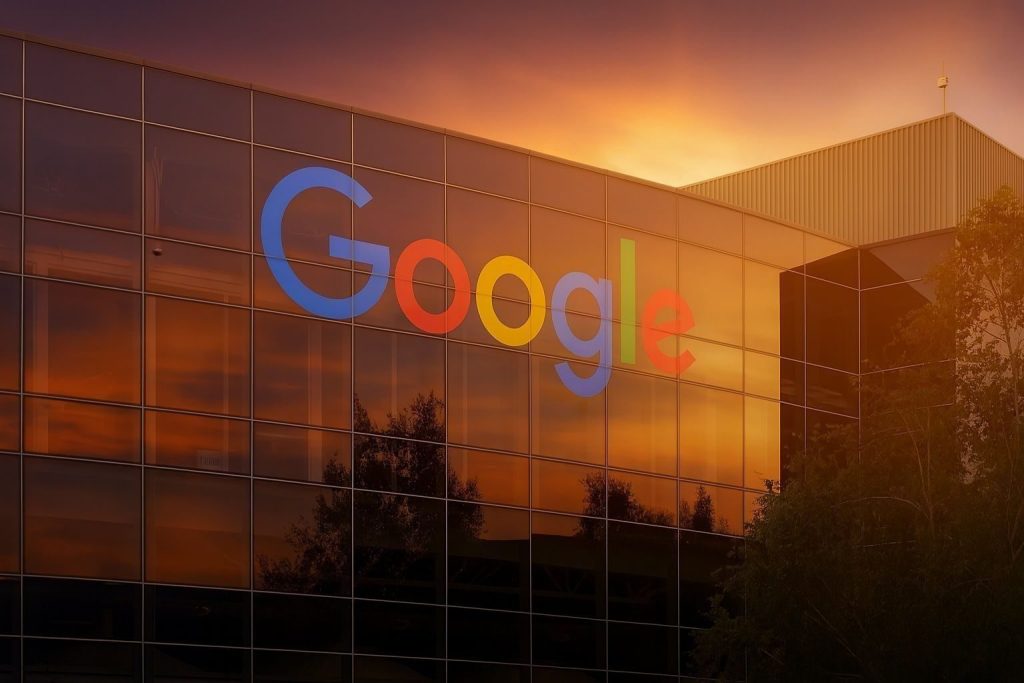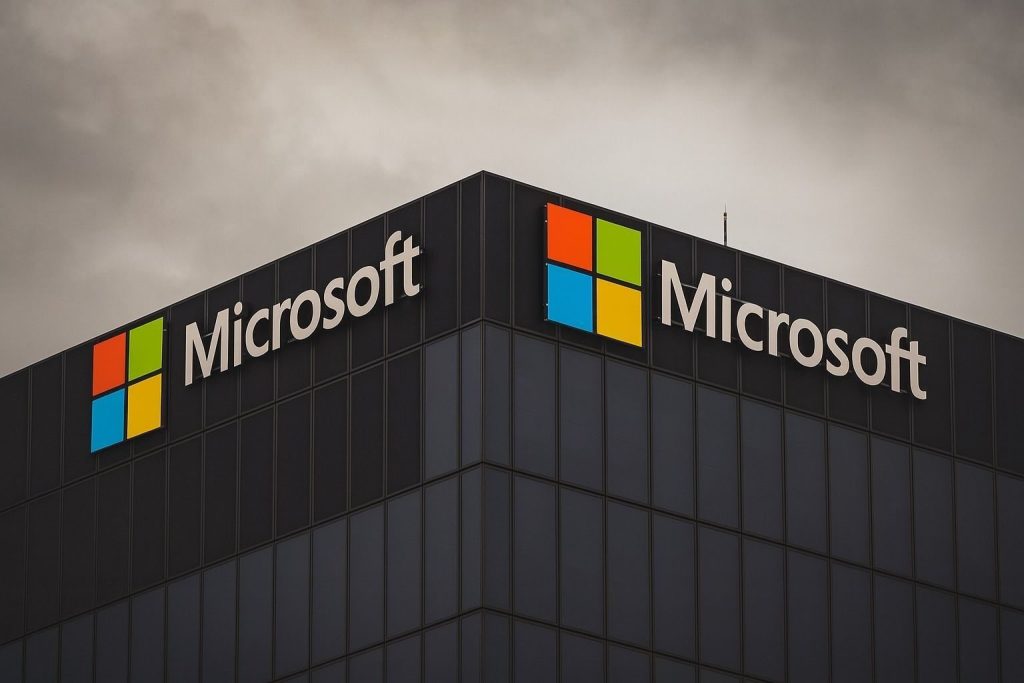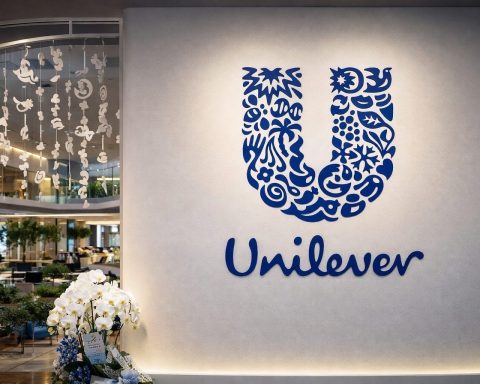Updated: November 28, 2025
Johnson & Johnson (JNJ) is closing out 2025 as one of the standout “defensive” winners in the U.S. market. The stock is trading just below a fresh 52‑week high around $205–$208 per share, giving the healthcare giant a market capitalization of roughly $500 billion. [1]
Over the last three months, JNJ shares have climbed about 17–18%, handily beating the S&P 500’s roughly 5% gain in the same period. Year‑to‑date, the stock is up about 43%, versus around 16% for the index. Barchart notes that JNJ has been trading above both its 50‑day and 200‑day moving averages since early July, underscoring a strong technical uptrend.
Today’s wave of coverage on November 28, 2025 focuses on a few key themes for Johnson & Johnson stock:
- Powerful oncology growth and the $3.05 billion Halda Therapeutics acquisition
- A major orthopedics spin‑off that will create a standalone DePuy Synthes
- Intensifying but mixed legal and regulatory signals around talc and employee benefit plans
- Strong institutional buying, including a multibillion‑dollar stake from Norway’s sovereign wealth fund
Below is a detailed look at what’s moving JNJ and what it could mean for investors.
JNJ stock today: price, performance and valuation snapshot
Near record highs and beating the market
Barchart’s Friday note, “Is Johnson & Johnson Stock Outperforming the S&P 500?”, highlights how far the stock has run in 2025. JNJ is trading only fractionally below its 52‑week high of $207.81 set on November 26, and has gained 17.6% over the last three months versus 5.1% for the S&P 500.
Over a longer horizon, Barchart estimates JNJ is up 43.5% year‑to‑date and about 34% over the past 52 weeks, more than doubling the index’s roughly 15.8% YTD and 13.6% one‑year gains. Simply Wall St, in a separate valuation deep dive, calculates JNJ’s total return over the last year at roughly 38%, reflecting dividends and slightly different measurement dates, but the story is the same: this has been a big year for a supposedly “boring” blue chip.
Valuation: not cheap, not bubble territory
Despite the rally, Johnson & Johnson is not trading at extreme multiples for a mega‑cap healthcare name:
- Trailing P/E: ~20.0x
- PEG ratio: ~2.2x
- Beta: ~0.38 (much lower volatility than the broader market)
- Dividend yield: about 2.5%, based on a $1.30 quarterly dividend ($5.20 annualized) recently declared for shareholders of record on November 25, payable December 9.
MarketBeat and Barchart data show that Wall Street’s consensus on JNJ is a “Moderate Buy”: roughly 4 analysts rate it Strong Buy, 13 Buy and 9 Hold, with an average 12‑month price target around $201–$204 per share. That puts the stock slightly above the current consensus target, suggesting much of the near‑term good news is already priced in.
Zacks, which focuses heavily on earnings revisions, currently ranks JNJ as a “Hold” (Rank #3) and puts its forward P/E around 18x, just above the pharma industry average.
Is JNJ still “good value” after a 44% run?
Simply Wall St’s new article, “Is J&J a Good Value After Its 11.2% Monthly Surge and Legal Updates?”, argues that the stock could still be undervalued. Their discounted cash‑flow model pegs JNJ’s “fair value” at roughly $380+ per share, implying a discount of about 45–50% versus today’s price.
Their analysis notes that JNJ’s P/E (~19.9x) is slightly below both the broader U.S. pharma industry (~20.6x) and a “fair” multiple they calculate around 26–27x based on earnings quality and growth. However, they also caution that the discounted valuation is partly offset by ongoing talc litigation risk, which remains a major overhang (more on that below).
Taken together, today’s valuation commentary paints a nuanced picture:
- Technicals: strong uptrend, near all‑time highs
- Fundamentals: still within a reasonable range for a high‑quality defensive growth giant
- Wall Street: positive but not euphoric, with targets now slightly behind the share price
Earnings and guidance: Q3 2025 keeps the growth story on track
Johnson & Johnson’s rally is built on more than just multiple expansion. Its third‑quarter 2025 results, reported on October 14, showed solid growth and a guidance raise:
- Q3 sales:$23.99 billion, up 6.8% year‑over‑year and slightly above Wall Street expectations.
- GAAP net earnings: about $5.15 billion, up more than 90% from a year earlier, boosted by comparisons against last year’s litigation charges.
- GAAP EPS:$2.12 vs $1.11 a year ago.
- Adjusted EPS:$2.80, up 15.7% year‑on‑year and ahead of the company’s prior outlook.
Both major segments contributed:
- Innovative Medicine (pharma):$15.56 billion, +6.8% year‑over‑year
- MedTech (devices):$8.43 billion, also +6.8% year‑over‑year
Following the beat, J&J nudged its 2025 product revenue forecast higher to $93.5–$93.9 billion, about $300 million above its previous range and slightly ahead of analyst expectations.
One weak spot was Stelara, the blockbuster psoriasis and immunology drug now facing biosimilar competition. Stelara’s sales dropped more than 40% year‑over‑year, according to Barron’s, underscoring why the company is so focused on replenishing its pharma portfolio via oncology launches and acquisitions.
Oncology push: Halda deal and a $50 billion revenue ambition
A fast‑growing cancer business
Johnson & Johnson’s oncology franchise is increasingly the centerpiece of the bullish thesis. According to a detailed Nasdaq/Zacks analysis published today, oncology already accounts for roughly 27% of J&J’s total revenue.
Key numbers from that report:
- Oncology sales have nearly doubled from about $10.7 billion in 2019 to $20.8 billion in 2024.
- For the first nine months of 2025, oncology revenue grew roughly 20.6% on an operational basis to about $18.5 billion.
- Management has set an ambitious goal of reaching $50 billion in oncology revenue by 2030, more than double the 2024 level.
That growth is being driven by a cluster of high‑profile medicines and pipeline candidates, including:
- Darzalex for multiple myeloma
- Carvykti, Tecvayli and Talvey in blood cancers
- Erleada and Akeega in prostate cancer
- Rybrevant and newer combinations in lung cancer, including subcutaneous regimens in development
Today’s oncology‑focused coverage emphasizes that J&J is not just defending existing blockbusters – it’s aggressively expanding into new mechanisms and modalities.
The $3.05B Halda Therapeutics acquisition
A major catalyst here is J&J’s late‑November announcement that it will acquire Halda Therapeutics OpCo, Inc. for $3.05 billion in cash.
Halda is a clinical‑stage biotech specializing in an “induced proximity” approach known as RIPTAC™. Its lead candidate, HLD‑0915, is an oral, first‑in‑class therapy targeting AR and BRD4 in metastatic castration‑resistant prostate cancer, with early‑stage trial data showing promising reductions in tumor markers.
Financial Times and other outlets note that:
- The purchase gives J&J another platform technology that could be deployed across multiple solid tumor types.
- The deal is part of a broader pharma M&A wave, with more than 20 biotech acquisitions between $1–10 billion announced across the industry in 2025 as legacy drugs lose exclusivity.
- J&J also completed a $14.6 billion purchase of Intra‑Cellular Therapies earlier in the year, expanding its neuroscience and psychiatry footprint.
For investors, the Halda deal underscores the strategic pivot: JNJ is leaning hard into high‑growth oncology, even as some older franchises like Stelara fade. If management can execute, the acquisition pipeline may help justify paying a market‑level multiple for a business that still looks defensive on earnings and dividend stability.
Portfolio reshape: DePuy Synthes spin‑off and a purer JNJ
On the device side, Johnson & Johnson is reshaping its portfolio by spinning off its slower‑growing orthopedics business into a separate company under the DePuy Synthes banner.
In October, the company announced plans to separate DePuy Synthes within 18–24 months, creating what it says will be the largest dedicated orthopedics company in the world, spanning hip and knee implants and trauma products.
Key facts from Barron’s and AP coverage:
- Orthopedics generated about $9.2 billion in 2024 sales and accounted for roughly 9.5% of J&J’s Q3 2025 revenue.
- Through the first nine months of 2025, ortho revenue of $6.82 billion was slightly down (‑0.3%) year‑on‑year, though Q3 rebounded with 3.8% growth, still slower than the broader MedTech segment.
- The new company will be led by Namal Nawana, former CEO of Smith & Nephew, and is designed to give orthopedics management more focus and flexibility.
For the remaining JNJ, the spin‑off moves the portfolio closer to a pure Innovative Medicine + high‑growth MedTech play, with less exposure to a more mature, capital‑intensive orthopedics business. Several commentators suggest that, over time, the market may be willing to pay a higher multiple for this more focused profile, though the separation also introduces execution risk and one‑time costs.
Legal and regulatory overhangs: talc, testing rules and a new dismissal
Talc litigation: verdicts mount, bankruptcy strategy stalls
Despite the strong stock performance, today’s valuation debate keeps circling back to talc lawsuits. A major update from Sokolove Law, refreshed November 28, 2025, lays out just how large the overhang remains:
- Over 90,000 Johnson & Johnson talc lawsuits have been filed as of November 2025.
- Tens of thousands of claims are consolidated in multidistrict litigation in New Jersey; one recent tally cites 59,571 pending ovarian cancer claims in the MDL as of mid‑2025.
- J&J’s talc‑related verdicts and settlements have already resulted in billions of dollars in payouts across ovarian cancer and mesothelioma cases.
Recent highlights from Sokolove’s timeline and other litigation trackers include:
- October 2025: A California jury awards a record $966 million to the family of a woman who died from mesothelioma after long‑term baby powder use.
- November 5, 2025: A Florida mesothelioma case results in a $20 million award to the family of Dr. Salvatore Casaretto.
- 2024–2025: A series of mesothelioma and ovarian cancer verdicts in Oregon, Massachusetts, Connecticut and other states produced awards ranging from the low millions to more than $260 million, with Sokolove estimating over $1 billion in mesothelioma verdicts in 2025 alone (some subject to appeal).
J&J has attempted multiple times to resolve the bulk of the litigation through a specialized bankruptcy vehicle, proposing multi‑billion‑dollar global settlements. On April 1, 2025, a U.S. bankruptcy judge rejected a proposed plan valued at roughly $10 billion, and Sokolove notes that a later iteration of about $8 billion was also turned down, marking the company’s third failed bankruptcy strategy.
The upshot: talc remains a live, expensive and unpredictable risk, and investors cannot assume it has been “put to bed,” even as the core business thrives.
FDA drops asbestos‑testing rule for talc products
Adding another layer of complexity, both The Guardian and Mesothelioma.net report today that the U.S. Food and Drug Administration is withdrawing a proposed rule that would have required asbestos testing for talc‑containing cosmetics, including some personal‑care products.
Advocacy groups argue that rigorous testing could have prevented or reduced some talc‑related cancers. The articles point out that cosmetic and personal‑care companies – including J&J historically – have long known about the possibility of asbestos contamination in talc and lobbied for less stringent testing.
For Johnson & Johnson specifically:
- The company discontinued its U.S. talc‑based baby powder in 2020 amid mounting lawsuits and public pressure, switching to cornstarch‑based formulations.
- It still faces nearly 38,000 talc‑related suits according to Mesothelioma.net and other advocacy groups, and is accused in some class actions of knowingly selling contaminated products.
From a purely financial perspective, the FDA’s decision could modestly reduce future regulatory risk for talc‑based cosmetics in general. But the reputational and legal overhang for J&J remains, as the vast majority of its cases relate to past behavior, not future product design.
A smaller legal win: drug benefit plan claims dismissed
Not every headline on JNJ’s docket is negative. Bloomberg Law reports that a New Jersey federal district court has dismissed claims that Johnson & Johnson mismanaged prescription drug benefits for employees, in a case brought under ERISA (the Employee Retirement Income Security Act). The judge found that the plaintiffs failed to establish standing, although they were given 30 days to file an amended complaint.
The case is relatively small compared to talc, but it illustrates that not all legal challenges stick, and some of the company’s litigation burden can and does get resolved in its favor.
Big money flows: Norges Bank and other institutions ramp up exposure
If you want to know what professional investors think of JNJ at these levels, follow the money. MarketBeat’s new report, “31,929,124 Shares in Johnson & Johnson Bought by Norges Bank,” reveals that Norway’s sovereign wealth fund has made a substantial move into the stock.
Key details from that 13F‑based article:
- Norges Bank purchased 31,929,124 JNJ shares in Q2, worth about $4.88 billion, making Johnson & Johnson its 23rd‑largest holding.
- That stake equates to roughly 1.33% of J&J’s shares outstanding and about 0.6% of the fund’s overall portfolio.
- Across the shareholder base, about 69.5% of JNJ stock is now held by institutional investors, including Vanguard, Geode, Northern Trust, Bank of New York Mellon and several other large asset managers that have modestly increased their stakes.
Additional filings highlighted today show that:
- Scotia Capital Inc. has raised its JNJ stake, now holding a position worth roughly $207 million.
- Skandinaviska Enskilda Banken AB (SEB) boosted its holdings by around 9%, to about $109 million.
- Level Four Advisory Services LLC increased its position by about 2.8%, and now owns roughly 68,000–70,000 shares, based on SEC filings and holdings aggregators.
Meanwhile, MarketBeat’s “Promising Healthcare Stocks to Consider” screener puts Johnson & Johnson alongside UnitedHealth Group and Intuitive Surgical as the three healthcare names with the highest recent dollar trading volumes, framing JNJ as both a liquidity magnet and a sector bellwether.
Heavy institutional ownership cuts both ways—especially when a stock runs this far this fast—but the latest flows suggest that big, conservative pools of capital still see JNJ as a core long‑term holding, not a short‑term trading vehicle.
What today’s Johnson & Johnson stock news means for investors
Putting all of today’s headlines together, the Johnson & Johnson story on November 28, 2025, looks like this:
Bullish factors investors are focusing on
- Strong, diversified growth engine
- Mid‑single‑digit top‑line growth overall, with double‑digit adjusted EPS growth and a guidance raise for 2025.
- A rapidly expanding oncology franchise, targeting $50 billion in annual cancer revenue by 2030.
- Strategic M&A and portfolio optimization
- The $3.05B Halda Therapeutics deal deepens JNJ’s prostate cancer and solid‑tumor pipeline with a cutting‑edge induced‑proximity platform.
- The planned DePuy Synthes spin‑off should leave a more focused, higher‑growth core JNJ in Innovative Medicine and MedTech.
- Defensive quality profile
- A long track record of dividend growth, with the latest quarterly payout implying a ~2.5% yield and a payout ratio around 50%, leaving room for reinvestment.
- Lower‑than‑market volatility (beta well below 1) and a massive, diversified product base.
- Validation from large institutions
- The new $4.9B purchase by Norges Bank and increased stakes from other global asset managers reinforce JNJ’s status as a core institutional holding.
Key risks and questions still hanging over JNJ
- Talc litigation and reputational damage
- More than 90,000 lawsuits, with multiple nine‑figure verdicts in the last two years and courts repeatedly rejecting JNJ’s attempts to settle via bankruptcy.
- New verdicts and regulatory decisions—even seemingly favorable ones like the FDA dropping an asbestos‑testing rule—can add headline volatility and unpredictable liabilities.
- Valuation vs. expectations
- The stock now trades above the average analyst price target, which means upside in the near term depends on either earnings beating forecasts again or Wall Street revising its targets higher.
- Execution risk in M&A and spin‑offs
- Integrating a complex biotech platform like Halda’s RIPTAC technology, while simultaneously carving out a multi‑billion‑dollar orthopedics business, will test management bandwidth.
- Patent cliffs and competition
- Steep declines in Stelara and potential future erosion in other mature franchises raise the bar for oncology and other growth drivers to deliver on schedule.
Bottom line
On November 28, 2025, Johnson & Johnson looks like a high‑quality, fully priced blue chip reshaping itself around oncology and higher‑growth MedTech, while still wrestling with a mountain of legacy talc litigation.
Today’s news shows:
- Momentum in earnings and stock performance
- Aggressive investment in cancer pipelines via Halda and prior deals
- A major structural shift via the DePuy Synthes spin‑off
- Legal and regulatory cross‑currents that remain the main wild card
For long‑term investors, JNJ continues to offer a combination of defensive stability and growth optionality, but at a valuation that leaves less room for disappointment, especially if litigation or integration setbacks emerge.
As always, this article is for informational purposes only and does not constitute financial or legal advice. Anyone considering Johnson & Johnson stock should evaluate their own risk tolerance, time horizon, and exposure to healthcare, and consider consulting a qualified financial professional.










